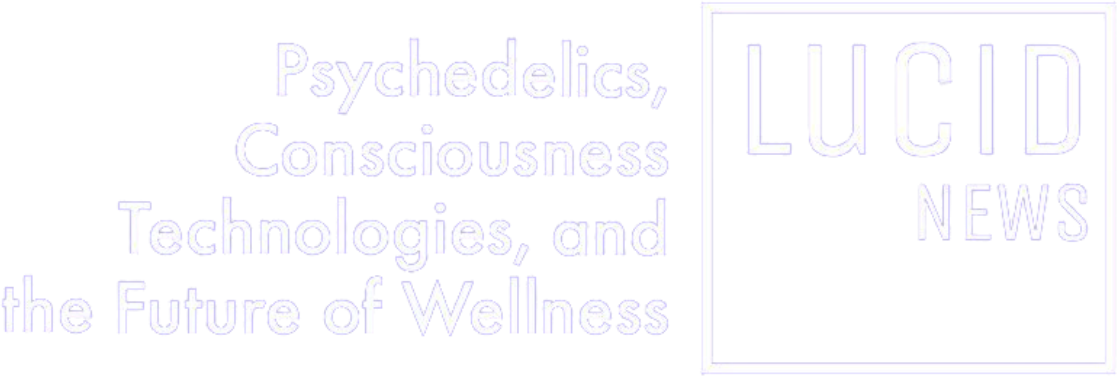Usona Puts New Psilocybin Synthesis Method in the Public Domain

The nonprofit Usona Institute has developed a new technique to synthesize kilograms of pharmaceutical grade psilocybin and placed this information in the public domain where it cannot be patented.
In a paper published in the journal ACS Omega, Usona scientists describe how they developed an innovative, efficient method to produce a more consistent yield and high purity of synthetic psilocybin based on the established Speeter-Anthony tryptamine synthesis approach.
Unlike previous methods of producing synthetic psilocybin, which involved a five- or six-step process, Usona’s new four-step technique described in the paper uses the reagent phosphoryl chloride instead of tetrabenzyl pyrophosphate to phosphorylate psilocin to produce psilocybin in crystal form.
Phosphoryl chloride allows for the direct phosphorylation of psilocin, whereas the use of tetrabenzyl pyrophosphate requires a tedious synthesis and isolation process with highly variable yield, as well as an additional step involving the use of a catalyst and hydrogen gas. Phosphorylation involves the chemical addition of a phosphoryl group (PO3–) to an organic molecule.
“It’s more elegant from a synthesis point of view than any existing method and much more streamlined,” says chemist Nicholas Cozzi, one of the co-authors of the ACS Omega paper. “It’s also less expensive and it’s greener than the older syntheses in which the atom economy was low.” Atom economy refers to the efficiency of a chemical process, accounting for all of the atoms going into a chemical reaction compared to the atoms ending up in the desired product.
Cozzi says Usona’s new synthesis produces more than a kilogram of psilocybin per batch, which can provide 40,000 – 50,000 doses of psilocybin in the 20 to 25 milligram range for use in clinical trials. According to Cozzi, this should be more than enough material for Usona researchers to complete their current clinical Phase 2 and Phase 3 clinical trials investigating the potential of psilocybin as a treatment for major depressive disorder (MDD) and receive FDA approval.
In a statement, Gary Tarpley, Chairman of the Scientific Advisory Board at Usona, credited the nonprofit’s research team and supporters for approaching established synthesis methods in new ways. “We are fortunate to have medicinal chemists and a manufacturing partner that could take a whole new view on the problem in finding an answer that we hope will serve many in this field.”
Usona’s manufacturing partner which produces their synthetic psilocybin is the Almac Group.
According to Cozzi, chemist Paul Daley, a fellow scientist at the Alexander Shulgin Research Institute, first suggested the idea of using phosphoryl chloride to directly phosphorylate psilocin to produce psilocybin. This reagent had been previously used to create a phosphorylated derivative of tetrahydrocannabinol (THC, the main psychoactive substance in cannabis), among other chemical uses. Daley also performed several key analyses of chemical intermediates early in the psilocybin synthetic process which helped guide later developments.
Daley observes that making “semi-synthetic” derivatives of known drugs is a routine strategy in medicinal chemistry to explore pharmacological properties such as shifts in bioavailability and duration of effect. In the case of the phosphoryl THC, which was first produced in 1978, Daley notes that animal experiments suggested potency was reduced, though the duration of effect was increased.
“This chemistry immediately suggested the same reagent could be used to turn psilocin to psilocybin, eliminating potentially hazardous steps in the previously used syntheses,” says Daley. “I am gratified the Usona group was able to demonstrate its utility.”
Usona’s new psilocybin synthesis technique is freely available for use by laboratories following cGMP or Current Good Manufacturing Practices set by the FDA. The nonprofit says that making this discovery publicly available is part of its Open Science commitment to advance scientific knowledge in the field. Usona is currently providing cGMP psilocybin to qualified researchers, at no cost, through its Investigational Drug Supply Program.
Cozzi notes that the same process of phosphorylation used in the new Usona synthesis may be useful to chemists developing new psilocybin-like compounds with improved absorption kinetics. “There are a couple of other phosphorylated molecules in Psilocybe mushrooms, such as baeocystin and norbaeocystin,” says Cozzi. “If someone wanted to make baeocystin or other phosphorylated tryptamines with various substitutions on the amine side-chain, this chemistry might be useful.”
Cozzi notes that the shorter route developed by Usona may provide producers of psilocybin an edge over organizations using other methods of synthesis.
“The older methods are more expensive, requiring extra reagents, personnel, and more time,” said Cozzi of older synthesis methods. “The Usona route will be more economical and suited for industrial scale or lab scale synthesis”.
Synthesis Provides Alternative to COMPASS Psilocybin Strategy
Usona’s new psilocybin synthesis technique also helps the nonprofit overcome earlier barriers it encountered when seeking laboratories to manufacture synthetic psilocybin for its clinical trials. Initially, in 2016, Usona partnered with Sterling Pharma Solutions Limited in the UK, with only modest success. In 2017, Usona approached UK laboratory Onyx Scientific to manufacture psilocybin. But Usona could not strike an agreement because the lab had an exclusive manufacturing contract with COMPASS Pathways, the UK-based for profit mental health care company.
Denise Bowser, Onyx Scientific Commercial Director, confirmed the agreement with COMPASS and says this type of exclusive arrangement is standard industry practice. COMPASS Pathways, declined to comment for this story.
According to a report by Bloomberg, COMPASS filed on August 28 with the U.S. Securities and Exchange Commission to raise $100 million in an initial public offering (IPO). COMPASS has been using the older five-step route employing tetrabenzyl pyrophosphate to synthesize synthetic psilocybin for its own clinical trials.
Lucid News reported in April that a patent granted to COMPASS in January 2020 for a formulation of crystalline psilocybin in a therapy protocol for patients with treatment-resistant depression was challenged by critics who charged that the company was attempting to claim ownership of prior psilocybin research.
Usona board member Carey Turnbull supported a legal challenge against a COMPASS patent which describes a process for synthesizing and manufacturing a specific dosage form of crystalline psilocybin called COMP360. A petition for a post-grant review of claims made in the patent, filed by the law firm of Kohn & Associates PLLC, was denied by the Patent Trial and Appeal Board of the U.S. Patent and Trademark Office on August 20. Turnbull and Kohn & Associates did not reply to requests for comment on the ruling.
The 21 claims in the COMPASS patent are based on a specific composition of crystalline psilocybin, called Polymorph A, described in an XRPD (X-ray powder diffraction) diffractogram. Produced by X-ray crystallography that reveals the arrangement of atoms in a crystalline substance, the XRPD reveals a pattern of peaks representing reflections that occur when a beam of X-rays is diffracted by a compound.
Kohn & Associates argued that the COMPASS technique was unpatentable because it produced psilocybin that was not substantially different from that produced by older synthesis techniques documented by chemist V.A. Folen and others. But patent examiners focused on two specific XRPD peaks published by Folen and noted that they differed slightly from the XRPD profile of psilocybin produced by COMPASS.
“It seems the patent judge put an emphasis on two specific XRPD peaks that differed from the data published by Folen by only a couple of tenths of a degree. This is likely due to instrumental variability and I believe that COMP360 actually does have the same crystal structure as the psilocybin described in the Folen paper,” says Cozzi.
“But if one is going to challenge the data presented in a patent, a very sound and rigorous argument should be presented, based on an exhaustive review of the literature, with challenge statements supported by specific examples.”
Cozzi notes that the petition filed by Kohn & Associates PLLC did not argue that the margin of error should have been wider or make a case for why it should be. The petition states that the variances are “. . .within the expectations of instrumental precision. . .”
Cozzi observes, however, that the XRPD instrument used by Folen, although specified in Folen’s original 1975 paper, was not mentioned in the patent challenge.
“It would have been worth knowing the actual precision of the instrument used by Folen and how it compares to the instrument used by the COMPASS analysts for the patent,” says Cozzi. “This would have allowed the patent challengers to make assertions of `expected instrumental precision’ and state with greater certainty whether or not the COMPASS data differed from the Folen data.”
Image: Usona Institute









